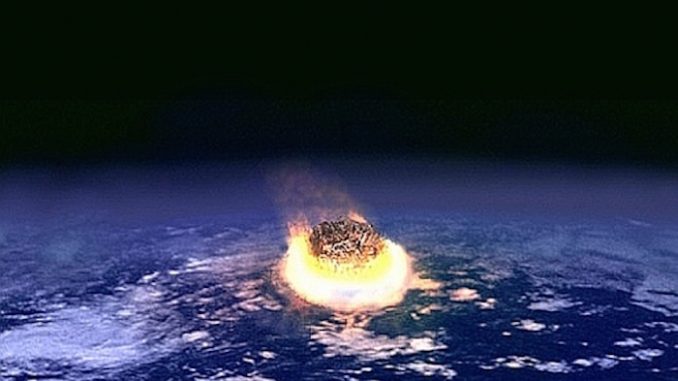
NASA has admitted that when it comes to asteroids that threaten life on Earth, they are flying blind. An asteroid the size of an Olympic swimming pool, large enough to wreak havoc on a regional scale, flew “an astromical hair’s breadth” away from Earth on Sunday – and NASA didn’t even know it was coming.
This asteroid was big, but not as large as the hurtling space rock believed to be responsible for the demise of the dinosaurs. That asteroid is estimated to have been about 6.2 miles (10km) across.

BYPASS THE CENSORS
Sign up to get unfiltered news delivered straight to your inbox.
You can unsubscribe any time. By subscribing you agree to our Terms of Use
Latest Video
And the rock which hit Tunguska in Siberia in 1908 – a major event in asteroid history – scorching forest and flattening trees across thousands of square miles, is believed to have been between 200 and 620 feet wide (60 and 190 metres).
Are these asteroids actually a danger to life on Earth?
According to Space.com, an asteroid would need to have a girth of more than 0.6 miles (1 km) to have the force to destroy humanity.
However a smaller space rock could devastate a whole continent, or wipe the population of a major country like the U.S. off the map.
But would NASA even see it coming? Experts believe the Earth could be hit by a humanity-destroying asteroid at any moment, and NASA would be as surprised as the rest of us.
It was astronomers at the Sonear observatory in Brazil that discovered the most recent rock to hurtle an astronomical hair’s breadth away from Earth. The asteroid has been named 2016 QA2.
According to NASA, if an asteroid of similar size to 2016 QA2 was to impact Earth, it would release approximately 2.5 megatons of energy in the atmosphere and would cause regional devastation.
Although a special NASA task force called the Planetary Defense Coordination Office (PDCO) responsible for identifying Near-Earth Objects (NEOs) was set up this year – and plans to create technology capable of deterring an Earth-bound asteroid are in development – fears persist that the Earth could be devastated by an unexpected asteroid despite our best efforts.
Seeing asteroids more clearly: How radar imaging has improved from 2001 to 2015. https://t.co/ingXrpDepE pic.twitter.com/TpcGKe4wCq
— Asteroid Watch (@AsteroidWatch) December 17, 2015
“In addition to detecting and tracking potentially hazardous objects, the office will issue notices of close passes and warnings of any detected potential impacts, based on credible science data,” NASA said. An Asteroid Watch Widget has also been published on the agency’s website.
The financing for the Near-Earth Objects (NEO) monitoring program has grown from $4 million to $50 million since 2010, due to NASA warnings that the asteroid threat has grown in recent years.
Currently there are about 1,500 NEOs identified and added into the database each year. NASA’s plan is to discover and identify 90 percent of NEOs at the size of, or a bit larger than, a football field in diameter – 140 meters (450 feet) – by 2021, as most of the bigger objects (1 km / 3,000 ft in diameter) have already been added, NASA reported.
“Asteroid detection, tracking and defense of our planet is something that NASA, its interagency partners, and the global community take very seriously,” John Grunsfeld, associate administrator for NASA’s Science Mission Directorate in Washington, said in the statement. “While there are no known impact threats at this time, the 2013 Chelyabinsk super-fireball and the recent ‘Halloween Asteroid’ close approach remind us of why we need to remain vigilant and keep our eyes to the sky.
“One immediate planetary defense goal for the newly-formed task force is to create a viable technology that can change the course of an asteroid approaching our planet.”


